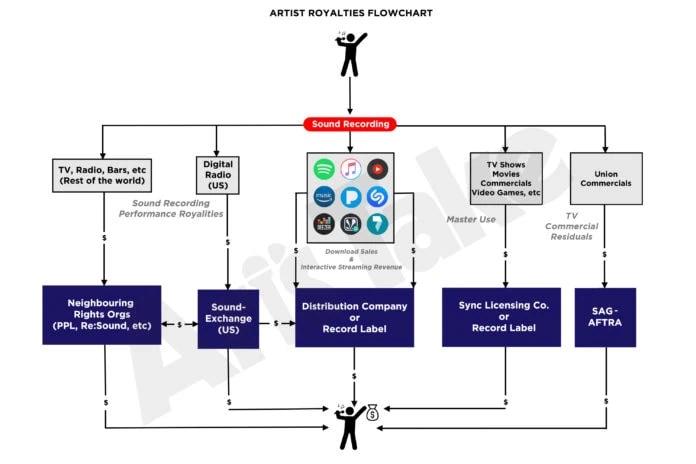In a bold move aimed at reshaping global perceptions of the continent, the African Union (AU) has officially joined the campaign advocating for the accurate representation of Africa’s geographical size on world maps. This initiative seeks to address the longstanding distortion of Africa’s scale, which has historically been minimized in comparison to other continents. Highlighted by the widespread use of the Mercator projection, which exaggerates the size of land masses located at higher latitudes, this campaign emphasizes the need for a true portrayal of Africa’s vastness—both in land area and cultural diversity. As discussions surrounding representation and equity continue to evolve, the AU’s involvement aims not only to educate the public but also to instill a sense of pride in Africa’s eminent position on the world stage.
African Union Advocates for Accurate Representation of Africa on Global Maps
The African Union has united with various stakeholders to address the long-standing issue of Africa’s misrepresentation on global maps. Recognizing that outdated projections have distorted the continent’s true size, the initiative aims to recalibrate perceptions and foster a more accurate understanding of Africa’s geographical dynamics. The campaign highlights the significance of representing Africa not merely as an underdeveloped landmass, but as a vibrant region rich in resources and cultural heritage. This push for authenticity is essential for cultivating global awareness and respect for African nations.
Key objectives of the campaign include:
- Raising Awareness: Educating the public about the inaccuracies prevalent in traditional map presentations.
- Promoting Educational Reforms: Encouraging curriculum changes that integrate accurate geographic information.
- Engaging Global Leaders: Urging governmental and non-governmental organizations to adopt more precise mapping practices.
As part of this movement, the African Union is collaborating with cartographers and geographers to produce new, scientifically accurate maps that reflect the continent’s real dimensions. The goal is not only to correct historical inaccuracies but also to empower African countries to assert their presence on the global stage with the dignity and respect they deserve.
Impact of Misrepresentation on African Identity and Development
The campaign led by the African Union to promote the ‘true size’ of Africa has significant implications for how African identity is perceived worldwide. For centuries, distorted maps have perpetuated a narrative that diminishes the continent’s vastness, cultural diversity, and historical significance. This misrepresentation shapes global perceptions, leading to stereotypes that undermine Africa’s contributions to human development and civilization. By illustrating Africa’s true scale, the initiative seeks to reclaim not only geographical accuracy but also the dignity and strength of its nations and peoples, reinforcing a sense of pride in African identity.
This campaign also aligns with broader development goals across the continent. Africa is home to a rich tapestry of cultures, languages, and resources; however, pervasive misconceptions limit investment and economic opportunities. By addressing these misrepresentations, stakeholders envision a future where African nations are recognized as equal players on the global stage. Key benefits of corrected representation include:
- Improved Geographic Awareness: Accurate maps foster a better understanding of Africa’s geography, enhancing tourism and investment.
- Cultural Reclamation: Promoting true geographic representation helps affirm cultural heritage and pride among African communities.
- Strategic Partnerships: Accurate data can lead to increased collaboration in trade, education, and development initiatives.
Recommendations for Collaboration in Cartographic Education and Awareness
The campaign for a more accurate representation of Africa’s geography serves as a prime example for collaboration in cartographic education and awareness. Stakeholders in education, including universities, governments, and NGOs, can work together to develop standardized curricula that emphasize the importance of accurate cartographic representations. By integrating geographic information systems (GIS) and cartography into education systems, institutions can enhance students’ understanding of spatial awareness and the implications of map projections on global perceptions of the continent’s size and significance. This collaborative effort can include:
- Joint Workshops: Organizing events focused on teaching the importance of accurate cartography.
- Curriculum Development: Creating modules that address map projections and their socio-political impacts.
- Public Awareness Campaigns: Utilizing media and social platforms to educate the public about the misconceptions surrounding Africa’s geography.
Additionally, partnerships can be created to facilitate access to modern cartographic tools and technology. By fostering a shared platform for research and resource sharing, institutions can collaborate on projects that promote geographic literacy. The establishment of a consortium dedicated to the study and re-evaluation of world maps could significantly enhance educational outreach, providing educators with the tools necessary to guide their students towards a more informed understanding of cartographic accuracy. Possible initiatives include:
- Online Resource Hubs: Curating databases of research and learning materials on cartography.
- Interdisciplinary Projects: Merging insights from geography, history, and cultural studies to explore diverse mapping narratives.
- Scholarships and Fellowships: Supporting students and professionals working in underrepresented fields related to cartography.
To Wrap It Up
In conclusion, the African Union’s endorsement of the campaign for the “true size” of Africa marks a significant step towards reshaping global perceptions of the continent’s geography. By advocating for a more accurate representation on world maps, the AU aims to address long-standing misconceptions that have underplayed Africa’s vastness and cultural richness. This initiative not only seeks to challenge outdated cartographic conventions but also aspires to inspire a renewed appreciation for Africa’s diversity and significance on the global stage. As the campaign gains momentum, it may pave the way for more equitable representations in educational resources, policy-making, and international discourse. The implications of these changes extend beyond geography, fostering a deeper understanding and respect for Africa’s role in the world community. As discussions surrounding this vital issue continue, the call for accurate representation serves as a reminder of the importance of perspective in shaping our understanding of global dynamics.

